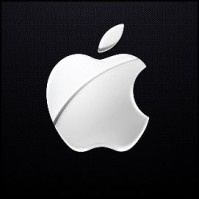Only the cash hoard in the US will be used to pay stockholders and buy back shares. More than $45 billion will be used in the next three years.
 Apple announced today it will put a portion of its $97 billion in cash to work by paying dividends and repurchasing stock during the current fiscal year. With an estimated payout of $10 billion in dividends in the first year, Apple will go from paying no dividends to having one of the largest cash dividend payment programs on record.
Apple announced today it will put a portion of its $97 billion in cash to work by paying dividends and repurchasing stock during the current fiscal year. With an estimated payout of $10 billion in dividends in the first year, Apple will go from paying no dividends to having one of the largest cash dividend payment programs on record.
Apple will also start a corporate stock-buyback program, which CEO Tim Cook says is primarily to neutralize the effect of its employee stock grant program. Between the two programs, Apple says it expects to pay out almost $45 billion in the next three years.
The initial dividend payment is expected to be $2.65 per share, starting in the third fiscal quarter. Apple says it will examine and readjust dividend payments as necessary to maintain a balance between shareholder income and corporate cash health.
Apple CFO Peter Oppenheimer says the new dividend payment will likely encourage more current shareholders to hold the stock long-term, and attract new shareholders who have avoided Apple because it has not been paying a dividend.
Although not acknowledged during a conference call with analysts this morning, corporate stock repurchases are widely considered an indirect form of dividend payout, because the purchases have the effect of making remaining shares more valuable by their relative scarcity.
The Microsoft example
When Microsoft announced in 2004 that it would make a one-time dividend payment of $32 billion and initiate a strong stock repurchase plan, it was interpreted by Wall Street as confirmation that Microsoft had moved from being a growth stock (where investors make money by selling the stock) to a mature stock (where investors make money by receiving a percentage of profits as dividends).
In Microsoft’s early years, when its stock price was rising, it often split its stock, a fast way of increasing shareholder value and at the same time making the stock more affordable to investors. Apple has split its stock 2-for-1 three times, most recently in 2005. Apple’s Cook said today the company considered a stock split, but noted “we see very little support that a split helps the stock. But we are in a unique position in a unique point in time.” Cook added that the idea of a stock split will be revisited as a part of future considerations.
Tax problems
Apple noted that the majority of its cash is outside the US, and that current US tax law provides a “considerable economic disincentive” to bring cash earned abroad back into the US. Under current law, profits brought back into the US would be taxed at a 35% rate. Several of the largest US-based technology corporations, including Apple, Google, Microsoft, and Autodesk, have pressed the government for a “repatriation holiday” of a temporarily lower tax rate, but have not been successful. The companies argue the tax break would be a shot in the arm to the economy by allowing them to invest in expanding their US operations. However, in a June 2011 article on the subject, the New York Times noted that a tax holiday in 2005 brought in $312 billion to the US, but 92% was applied to corporate dividends and stock repurchase.






